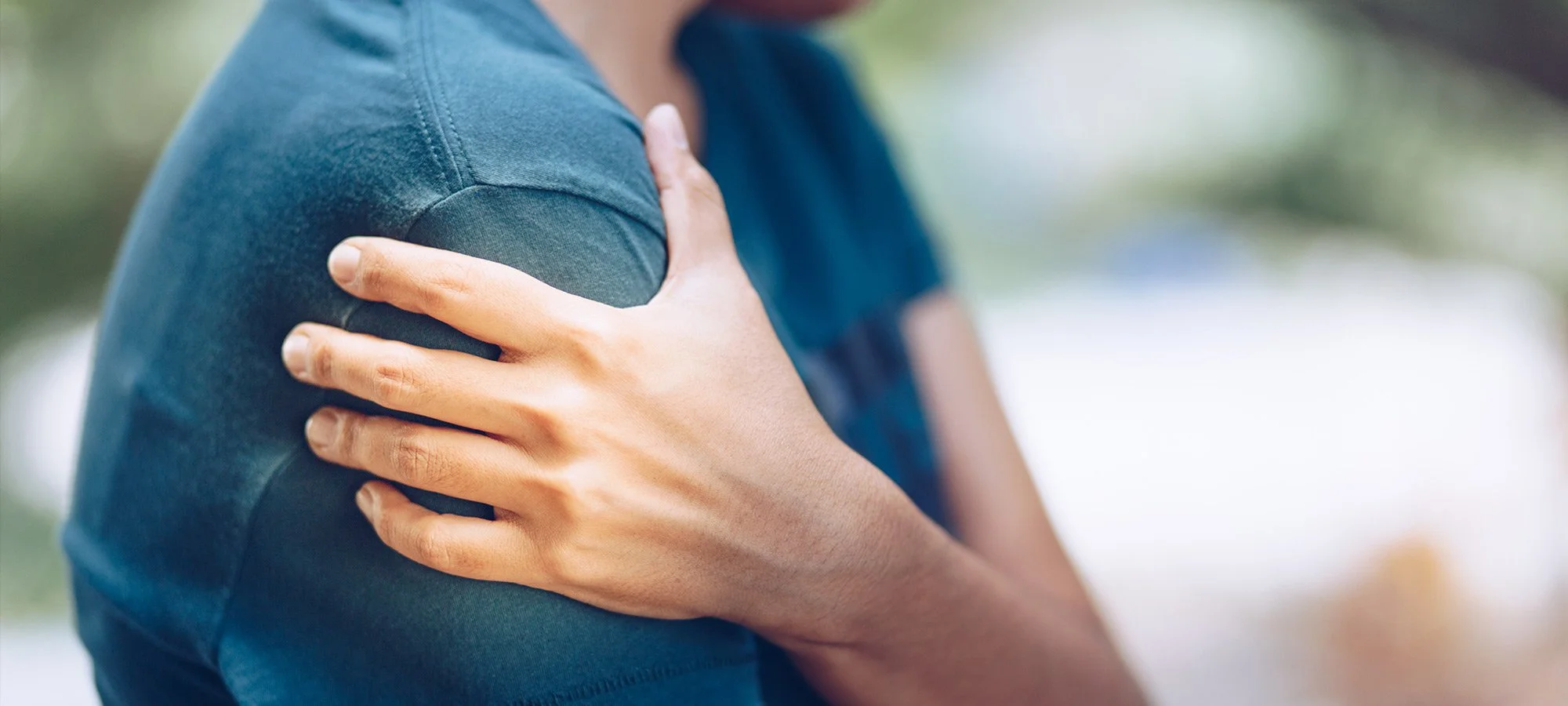
Shoulder Instability
Feeling a loose or unstable shoulder, or experiencing dislocations? As dedicated osteopaths, we offer specialized home visit treatment in Mallorca to improve shoulder stability and confidence.
What is Shoulder Instability?
Shoulder instability occurs when the head of the humerus (upper arm bone) moves excessively or slips out of its normal position within the shallow socket of the shoulder blade (glenoid). This can lead to a feeling of looseness, apprehension, or actual subluxations (partial dislocations) and dislocations (complete separation of the joint surfaces).
The shoulder is the most mobile joint in the body, making it inherently less stable than others. Its stability relies heavily on a complex interplay of structures:
Ligaments and Joint Capsule: These provide passive stability, holding the bones together.
Labrum: A rim of cartilage around the glenoid that deepens the socket.
Rotator Cuff Muscles: These four muscles actively stabilize the joint, pulling the humerus into the socket during movement.
Scapular Stabilizers: Muscles that control the movement and position of the shoulder blade, providing a stable base for arm movement.
Shoulder instability can be:
Traumatic: Often results from a significant injury, such as a fall or sports impact, that forces the shoulder out of joint. This can damage ligaments, the labrum (e.g., a Bankart lesion), or even bone.
Atraumatic (or Multidirectional): Develops gradually without a specific injury, often due to inherent ligamentous laxity or poor muscle control.
Understanding the specific cause and pattern of your shoulder instability is key to effective management. As experienced osteopaths, we conduct thorough assessments to identify the underlying factors contributing to your shoulder's lack of stability.
How does it feel?
Shoulder instability manifests as a range of sensations, from a subtle apprehension during certain movements to acute pain and a feeling that the shoulder is "giving out." Common sensations and issues associated with shoulder instability include:
Feeling of Looseness or Slipping: A distinct sensation that the shoulder is not securely in its socket, especially with overhead or outward arm movements.
Apprehension: A strong feeling of fear or anxiety that the shoulder might dislocate or subluxate when the arm is placed in certain positions (e.g., arm outstretched and rotated outwards).
Pain: Can range from a dull ache to sharp pain during movements that challenge stability, or intense pain during a subluxation or dislocation event. This pain may be similar to that experienced with shoulder impingement in certain movements.
Clicking or Popping: Noises or sensations within the joint during movement.
Weakness: A feeling of general weakness in the arm, or specific weakness during movements that require shoulder stability.
Repeated Dislocations or Subluxations: The shoulder may partially or fully come out of joint frequently, even with minimal force.
Limited Participation in Activities: Difficulty or inability to perform sports, work, or daily tasks that involve challenging shoulder positions.
Associated Neck or Upper Back Tension: The body may try to compensate for shoulder instability by tensing muscles in the neck or upper back, leading to secondary pain or stiffness.
How Can Osteopathy Help?
For those navigating the challenges of shoulder instability, our Osteopathic Treatment at MallorcaOsteopaths offers a gentle yet effective approach. We understand that a stable shoulder is crucial for comfortable movement and function, and our focus is on supporting the structures that contribute to its stability.
Our osteopathic treatment in Mallorca for shoulder instability focuses on:
Reducing Pain and Inflammation: Through gentle, non-invasive manual techniques, we work to alleviate pain and any associated inflammation, creating a more comfortable environment for rehabilitation.
Restoring Optimal Joint Mechanics: We apply specific articulation and mobilization techniques to the shoulder joint, shoulder blade (scapula), collarbone (clavicle), and ribs. This ensures that these bones are moving freely and optimally, providing a better foundation for shoulder stability.
Enhancing Muscular Control and Strength: We focus on releasing tension in overactive muscles and improving the activation and coordination of key stabilizing muscles, particularly the rotator cuff and scapular stabilizers. While our primary focus is hands-on, we may provide guidance on targeted exercises to build dynamic stability.
Improving Proprioception (Body Awareness): Osteopathic treatment can enhance the body's sense of position and movement, which is crucial for the unconscious control needed to keep the shoulder stable.
Addressing Postural and Compensatory Patterns: Poor posture (e.g., rounded shoulders, forward head) and compensatory movements can worsen instability. We assess and treat these patterns, and provide ergonomic advice to reduce strain and prevent recurrence. This also helps alleviate secondary issues like neck pain or low back pain from altered posture.
Releasing Fascial Restrictions: The fascial network throughout the body can impact joint stability. We use techniques to release fascial tension around the shoulder, arm, and torso to improve overall movement freedom and support.
Providing Rehabilitation Guidance: A crucial part of our approach involves guiding you through appropriate exercises and activity modifications to progressively challenge and strengthen your shoulder, ensuring a safe and effective return to your desired activities. Our home visit service is particularly beneficial for this, allowing us to assess your environment and daily movements directly.
Whether you're a long-term resident managing chronic shoulder instability or a visitor needing support after an acute shoulder dislocation in Mallorca, our home visit osteopathy service across the island offers highly convenient and effective solutions. We bring expert, personalized care directly to you, helping you regain confidence and stability in your shoulder.